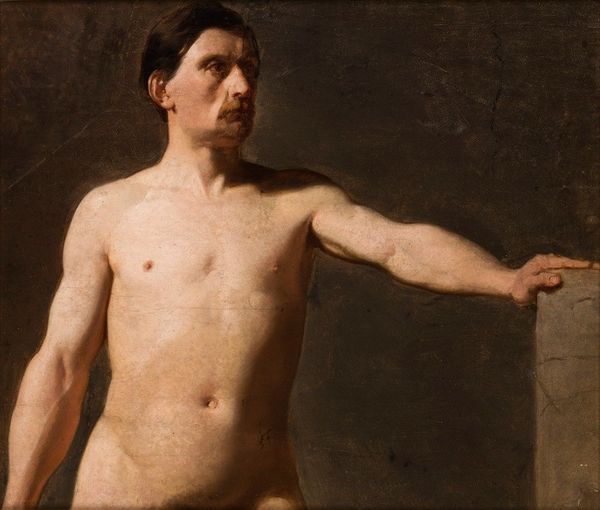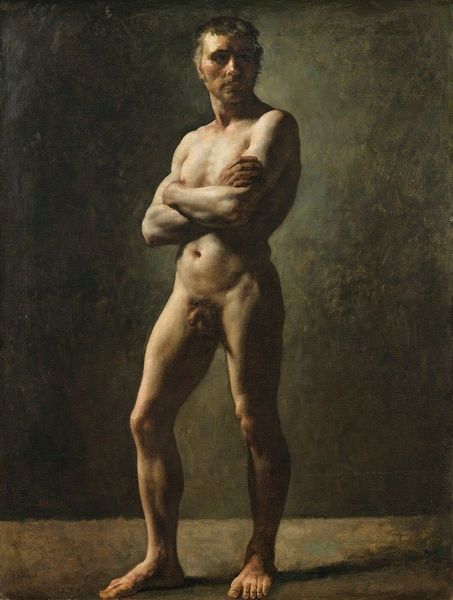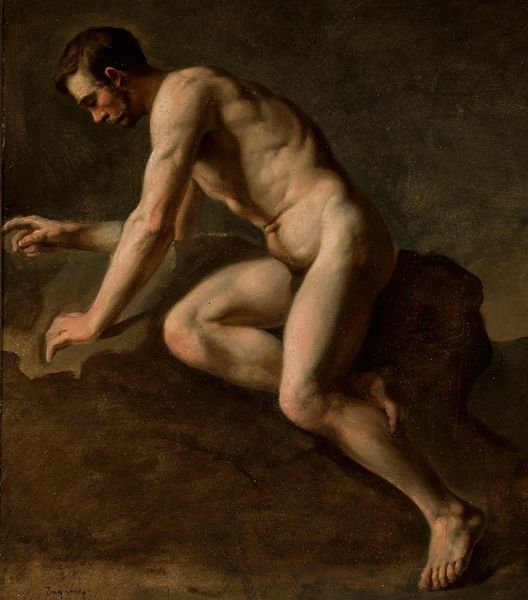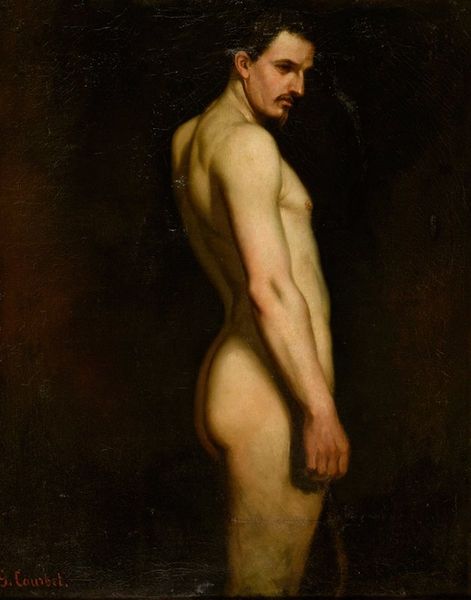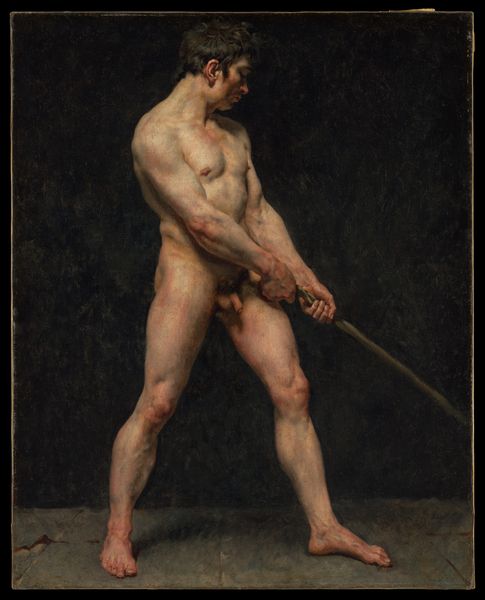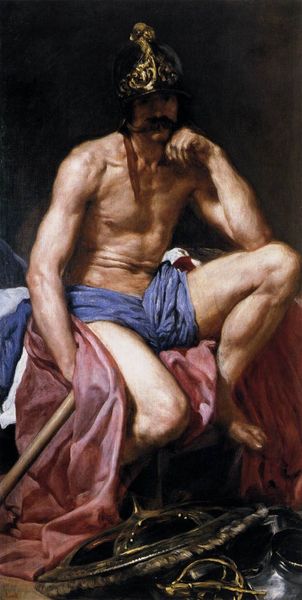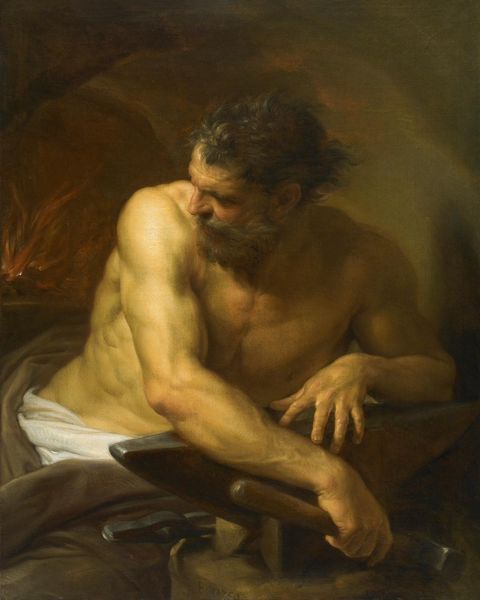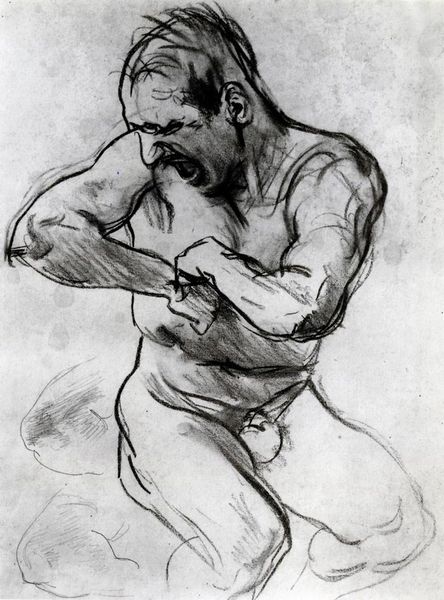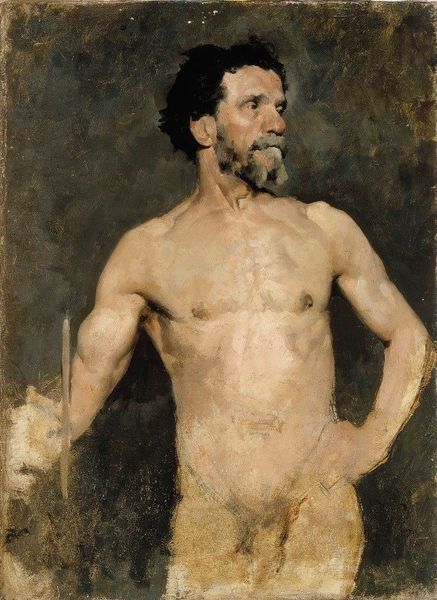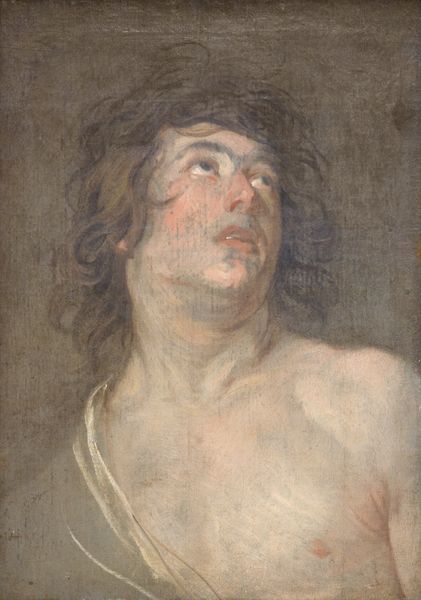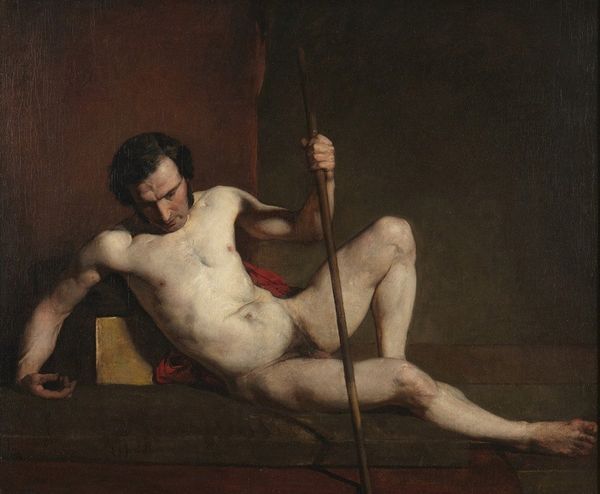
#
figurative
#
portrait
#
portrait reference
#
portrait head and shoulder
#
animal portrait
#
animal drawing portrait
#
portrait drawing
#
facial portrait
#
portrait art
#
fine art portrait
#
digital portrait
Copyright: Public Domain: Artvee
Editor: So here we have "Male semi-nude" by Jan Matejko, painted in 1859. It has a somber mood, definitely very realistic with a focus on flesh tones and shading. What jumps out at you when you look at this? Curator: What strikes me is the artist’s close attention to the body as a material object. We see the weight of the flesh, the way light interacts with its surface. Matejko wasn't simply rendering an idealized form; he was examining the body as something tangible, something worked and molded. Think about the labour involved, both the artist's in rendering this form and the implied physical labour that shapes the subject's physique. Does the subject look to you like he lives a life of privilege, divorced from manual labor? Editor: Not particularly, no. There's a certain...earthiness about him. So, you're seeing it as a commentary on the physicality of existence? Curator: Precisely. Consider also the conditions of production for art like this in 1859. Oil paint, canvas – these were increasingly industrialized products, connecting artistic creation to broader systems of manufacturing and trade. Even the very act of creating a "fine art portrait" like this relies on a whole infrastructure of material production. And look closer. Are there subtle cues of Polish identity in his physiognomy? This work was created when Poland was partitioned, not even appearing on any maps. So what implications for Matejko, as an artist whose subject may be toiling under colonial repression? Editor: That’s a perspective I hadn't considered. It brings a whole new layer of meaning to the artwork, to consider Matejko's own context. Curator: Right! Considering that makes me wonder about the role of art and the artist during social upheaval, especially from this era and geographical setting. What could he be trying to do? What conversations could this evoke? Editor: So, by looking at the materials and the historical context, we move beyond just seeing a "portrait" and instead see a statement about labor, materiality, and possibly even national identity. I'll never look at another nude painting quite the same way!
Comments
No comments
Be the first to comment and join the conversation on the ultimate creative platform.
